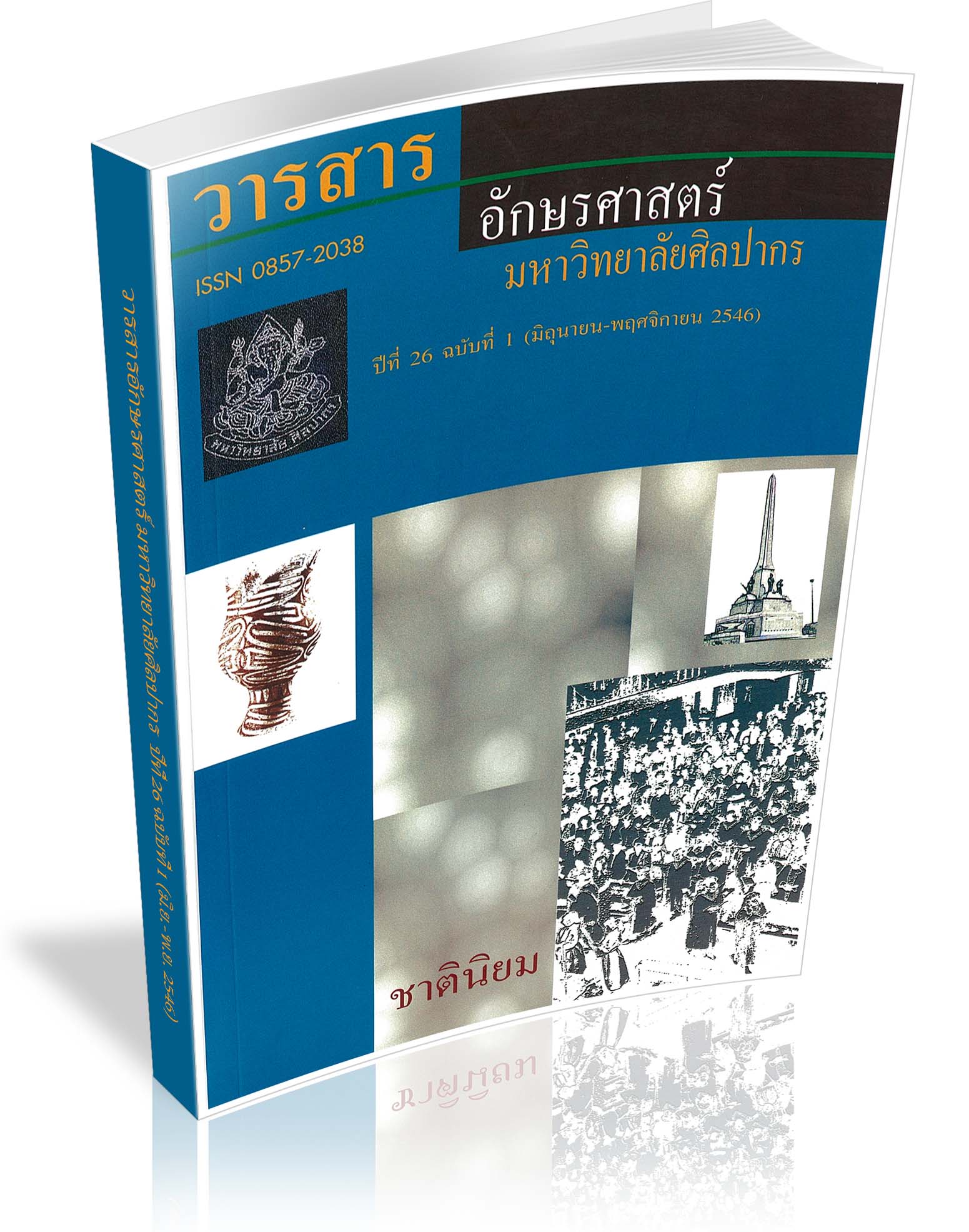The Politics of Positing the Name of the country: from Siam and Thai to be Thailand (1887-1937)
Keywords:
Thai, Politics, HistoryAbstract
Most researches on the politics of our country's names debate whether the title "Siam" or "Thai" is more appropriate for the country. However, there has been no formal attempt to question why the country should be called "Thai" and how this title is justified, not to mention that the history of the title "Siam" also deserves a thorough investigation. Most researches also aim to provide historical narrative of Thai race, its migration, the anti Chinese movement, etc. In the contrary, I think that "Siam" or "Thai" are merely the supposed (posited) names, so my debate in this article will exclude such issue as "Siam vs. Thai." However, it is important to mention the influence of the thought and belief on (Thai) race as well as name positing of the country as a part of my discussion on the historical consequences of the so-called 1932 revolution. The changing of the name from 1'Siam" to "Thailand" is a complex political agenda driven by the People Party (Khana Rassadorn) regime, who attempted to transform the "Siam under the absolute monarchy" to the "Thailand under democracy." Later,
political strive was also integrated into the Phibul reg propaganda in constructing the "nation" in 1937s.
"Thailand" was, henceforth, enacted as the name of the country, and firmly maintained despite many undermining conflicts and problems that the political elites of the regime had to face such as the political justification of the new government, the democratization, the majority rule. etc. These elites tried to resolve the confronting problems via centralization, a political mechanism resembling the governing system originated during the reign of King Rama V. Prior to this centralization. though some elites claimed to be "Thai" and used their dialect as a formal "Thai" language; people and the country as a whole were not yet formally recognized as either "Thai" citizen or "Thailand." After the political transformation in 1932, those-elites who came to power claimed
to be the representation of the all people, thus, imposing the "Thai"-ness as a national identity. Consequently. the country became officially known as "Thailand" and its citizen as "Thai."
Downloads
Downloads
Published
How to Cite
Issue
Section
License
ผู้เขียนบทความต้องยินยอมในข้อกำหนดต่าง ๆ ของวารสารก่อนส่งบทความตีพิมพ์




